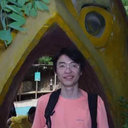Bioassay-Guided Isolation of Anti-Inflammatory Components from the Bulbs of Lilium brownii var. viridulum and Identifying the Underlying Mechanism through Acting on the NF-κB/MAPKs Pathway.
Ključne riječi
Sažetak
The bulbs of Lilium brownii var. viridulum (LB) are commonly used as both traditional Chinese medicines and popular functional food for many centuries in China. Previous studies reported that the extract of lily bulbs exhibited anti-inflammatory activity both in vivo and in vitro, but its active components and associated molecular mechanisms remain elusive. In the present study, using bioassay-guided isolation method, two phenylpropenoid acylglycerols, 1-O-feruloyl-2-O-p-coumaroylglycerol (1) and 1,3-O-diferuloylglycerol (2), were obtained and identified from the chloroform fraction of LB. Both compounds 1 and 2 significantly decreased the production of nitrite oxide (NO) in lipopolysaccharide (LPS)-stimulated mouse macrophage RAW264.7 cells in a dose-dependent manner with half maximal inhibitory concentration (IC50) values of 9.12 ± 0.72 μM and 12.01 ± 1.07 μM, respectively. They also inhibited the production of prostaglandin E2 (PGE2) and several other pro-inflammatory cytokines, such as interleukin-1β (IL-1β), interleukin-6 (IL-6), and tumor necrosis factor-α (TNF-α). Furthermore, compounds 1 and 2 downregulated the protein levels of inducible nitric oxide synthase (iNOS) and cyclooxygenase-2 (COX-2). They also inhibited the nuclear translocation of nuclear factor-κB (NF-κB) p65 subunit and suppressed mitogen-activated protein kinases (MAPKs) pathway. Taken these data together, compounds 1 and 2 exhibited anti-inflammatory activities through acting on the NF-κB and MAPKs pathway. This research provides the first evidence on the major bioactive constituents and related molecular mechanisms of LB as an anti-inflammatory agent. Our findings also advanced the understanding of LB as a traditional herbal medicine for the prevention and treatment of inflammation.




